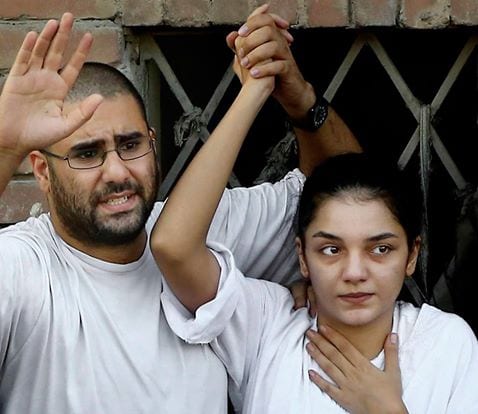Fears and criticism are increasing in Egypt about the disappearance of the historical face of Cairo, due to the bridges and expansions carried out by Abdel Fattah al-Sisi’s government, which resulted in the demolition of many heritage and historical buildings in Cairo that are more than 1,000-years-old.
Since al-Sisi came to power in 2014, the government has built more than 600 bridges and about 21 new axes at a $5.3 billion cost. According to what was announced by the Egyptian Minister of Transport, Kamel al-Wazir last August, the government also plans to implement 1,000 overpasses and a tunnel at a cost of nearly $8 billion. The government claims that these expansions aim to solve the traffic crisis in Cairo, where more than 20 million people live.
Over the years of al-Sisi’s rule, new roads penetrated many cities, but they also reached Egyptians’ pockets after high fees were imposed on the people, which caused controversy and anger. Al-Sisi responds every time with the same words which have become a joke for Egyptians, indicating the end of the era of free or subsidised services by the state.
Al-Sisi is keen to inspect the roads himself in a way that led some to ridicule him, describing him as a contractor and not a president. Apart from that, al-Sisi’s projects are causing a state of anger among those interested in antiquities, which is the Egyptian government’s decision to start implementing the construction of a bridge that passes near the ancient Basilica Church in Heliopolis. This ancient church was built by Baron Amban at the beginning of the last century, in addition to several old buildings.
The Bassara Initiative for Heritage Preservation and Architecture said that Cairo is a living historical city that has been registered in the UNESCO Heritage List, not only for its monuments but for the presence of cemeteries still in use, its traditional crafts, and accumulated layers of history. It called for these places to be handled with special treatment to preserve and restore them because they are not only the property of Egypt but also the property of the world. The initiative added that cutting the city’s urban fabric and demolishing parts of it is an “erasure and distortion of historic Cairo.” The initiative expressed its complete rejection of that, noting that Article 50 of the Egyptian Constitution obliges the state to preserve cultural components. It pointed out that according to Egyptian law, no ancient buildings were demolished, but what was destroyed were heritage buildings. It said: “Here, the problem lies in a word, archeology, that has been pardoned by time. All that is related to the history and contributions of moral or material persons, or the product of a society, or what constitutes a visual identity or a community memory, is called heritage, not archeology,” she said.
Last August, the government demolished the ancient Mamluk Cemetery to establish the axis of Paradise in Cairo, which sparked great controversy among Egyptians because of the place’s history, which dates back hundreds of years. The government is also demolishing houses and moving cemeteries from the Sayyida Aisha area and the vicinity of Salah al-Din Citadel (a historical place with many Islamic historical monuments) to implement some traffic axes there.
Many residents of Heliopolis and Nasr City (east of Cairo) also mourn over the cutting down of decades-old trees. Residents are demanding the government stop deforming their beautiful neighbourhoods under the pretext of building roads and bridges or at least implementing these projects in a way that preserves the nature and splendor of the place. Last September, several Egyptologists and conservationists criticised the government’s willingness to forge two highways through the Pyramids Plateau. They emphasised that they threaten the safety of the pyramids plateau and pass over archaeological sites that have not yet been discovered, as well as create pollution that leads to the erosion of antiquities.
In this regard, the founder of the Egyptian Social Democratic Party, Muhammad Abul-Ghar, said that traffic crises exist everywhere globally. He added, “No one does what we are doing in terms of destroying history and heritage, but it seems that the planned horizon of the projects is limited, and its aesthetic view is non-existent.” Meanwhile, several activists on social media accuse the government of sacrificing Cairo’s history to facilitate the traffic movement of the “administrative capital,” which the government is building 60 kilometres from the capital’s heart.
Economists and planning experts also see that despite the benefits of establishing a new road network to facilitate movement, there is a clear imbalance in the order of priorities. What is spent on constructing new roads between cities, especially new and touristy ones such as the Administrative Capital, is greater than what is spent on dilapidated roads in densely populated governorates, where millions suffer from severe bottlenecks.
Experts emphasised that despite the benefits of establishing a new road network to facilitate movement, there is an imbalance in the order of priorities on the one hand, and suspicions of corruption and billions of pounds from the pockets of Egyptians, on the other hand, which must be revealed. Some of them indicated that these vast sums were frozen in futile concrete blocks, while it would have been more expedient to spend them on other projects that contribute to increasing production, employing a workforce, providing job opportunities, and increasing exports.





Recent Comments